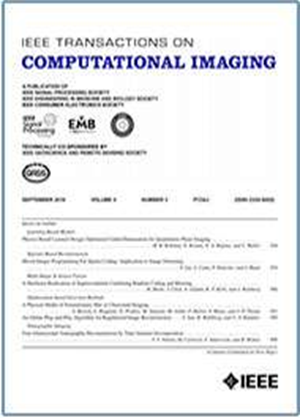RLNet: Reshaping Learning Network for Accurate Low-Light Light Field Image Enhancement
IF 4.8
2区 计算机科学
Q2 ENGINEERING, ELECTRICAL & ELECTRONIC
引用次数: 0
Abstract
Existing low-light light field (LF) image enhancement methods have difficulty in recovering image details due to underutilization of the 4D LF structure. Therefore, we propose a novel reshaping learning network named RLNet to better exploit the 4D LF structure. The main idea of the network is to divide and conquer, that is, to combine complementary traits from multiple 2D representations reshaped by LF data. Specifically, the network firstly learns local information and global information from neighboring views and all views, respectively. Then, based on the above extracted information, reshaping learning modules (RLMs) are employed to fully exploit the 4D LF structure, which reshape LF images into different 2D representations, and then simultaneously mine their corresponding traits. In addition, the network also integrates contrast attention modules (CAMs) to enhance image details. To validate our idea, we comprehensively evaluate the performance of our RLNet on three publicly available datasets with different illumination. Experimental results demonstrate the superior performance of our method. Our method achieves an average PSNR gain of 0.45 dB compared to current state-of-the-art methods.RLNet:用于精确弱光光场图像增强的重塑学习网络
现有的低照度光场图像增强方法由于未充分利用四维光场结构,难以恢复图像细节。因此,我们提出了一种新的重塑学习网络RLNet,以更好地利用四维LF结构。该网络的主要思想是分而治之,即将LF数据重塑的多个2D表示中的互补特征组合在一起。具体来说,网络首先分别从相邻视图和所有视图中学习局部信息和全局信息。然后,基于上述提取的信息,利用重塑学习模块(rlm)充分利用四维LF结构,将LF图像重塑成不同的二维表示,并同时挖掘其相应的特征。此外,该网络还集成了对比注意模块(CAMs)来增强图像细节。为了验证我们的想法,我们在三个不同光照的公开数据集上全面评估了RLNet的性能。实验结果证明了该方法的优越性。与目前最先进的方法相比,我们的方法实现了0.45 dB的平均PSNR增益。
本文章由计算机程序翻译,如有差异,请以英文原文为准。
求助全文
约1分钟内获得全文
求助全文
来源期刊

IEEE Transactions on Computational Imaging
Mathematics-Computational Mathematics
CiteScore
8.20
自引率
7.40%
发文量
59
期刊介绍:
The IEEE Transactions on Computational Imaging will publish articles where computation plays an integral role in the image formation process. Papers will cover all areas of computational imaging ranging from fundamental theoretical methods to the latest innovative computational imaging system designs. Topics of interest will include advanced algorithms and mathematical techniques, model-based data inversion, methods for image and signal recovery from sparse and incomplete data, techniques for non-traditional sensing of image data, methods for dynamic information acquisition and extraction from imaging sensors, software and hardware for efficient computation in imaging systems, and highly novel imaging system design.
 求助内容:
求助内容: 应助结果提醒方式:
应助结果提醒方式:


